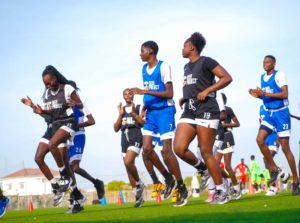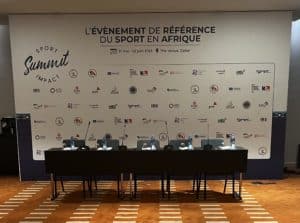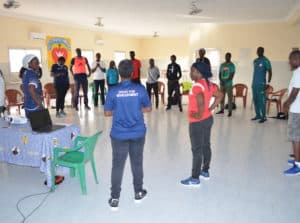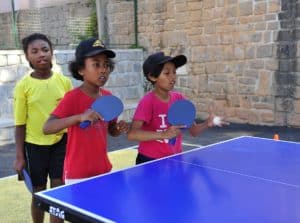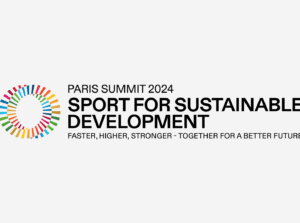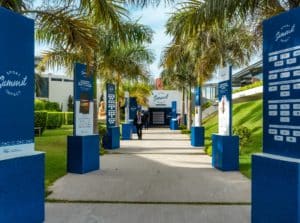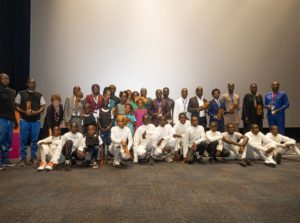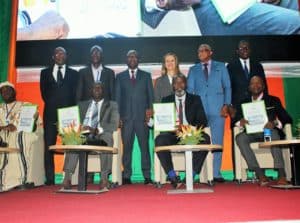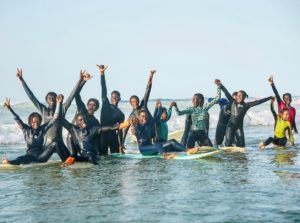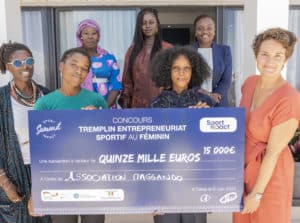
Sports academies: A driving force of development in Africa?
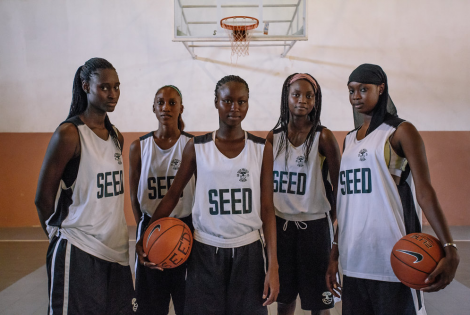
The sport sector represents nearly 2% of the world’s GDP, but contributes only 0.5% of Africa’s GDP (Mazars & ASCI Institute, 2020). While the continent’s sports economy has great potential due to its high growth rate, youthful population and athletic talent, there are shortcomings in areas such as career management, infrastructure, and training that hinder its development (Ibid).
Several African countries are now banking on the sports industry to drive their socio-economic growth. However, this growth alone cannot ensure the achievement of the Sustainable Development Goals (SDGs) set by the United Nations by 2030 (World Bank, 2014), nor the success of the African Union’s Agenda 2063. Ensuring that sport contributes to the emergence of a new development model on a continental scale and guaranteeing its social impact implies combining sport development and sport for development and peace (SDP).
In the combination of these two different but interdependent approaches, sports academies, in the broadest sense, are among the most transversal and multidimensional stakeholders. Depending on their objectives, strategies, and the contexts in which they operate, they can contribute to the development of local sport (democratisation and professionalisation of sports disciplines, strengthening the specific skills of sports players, etc.), to human and sustainable development, and to athletes’ protection.
Sports academies in Africa: An ambiguous impact
African sports academies are highly heterogeneous, and few studies have been devoted to them. In 2007, Darby, Akindes and Kirwin established a typology of football academies in Africa, “broadly defined as facilities or training programs designed to produce football talent”. They establish four main categories:
- African academies, organised and run by African clubs or national federations, which operate like their European counterparts;
- Afro-European academies, which involve either a partnership between an existing academy and a European club or an arrangement whereby a European club takes a controlling interest in an African club;
- Private or corporate-sponsored academies, usually supported by former top African players and national soccer federations;
- Unaffiliated, ad hoc, improvised academies with poorly trained staff and inadequate facilities.
In South Africa, sports academies have been established as an institutionalised system. Indeed, the development of South African sport through a coordinated academy system is one of the strategic objectives of the National Sport and Recreation Plan (2012). Setting up a series of decentralised institutions (national, provincial and district academies of sport), under a unified and integrated national approach, aims to develop sports talent at different levels, especially from disadvantaged groups.
The impact of sports academies on African sport, societies, and athletes remains ambiguous, however. In Ethnographie des académies de football au Ghana (2010), Darby highlights the differences and nuances that underlie this functioning in order to fully understand the role of training centres in Africa and measure their impact on football and society. For example, football academies in Ghana are said to simultaneously facilitate the development and underdevelopment of African football. If the most talented players are indeed exported, some will then join the national team, while the others will feed local teams. Nevertheless, the exodus of talent makes local leagues less attractive, resulting in lost ticket sales, a lack of interest from both sponsors and the media, and, therefore, fewer opportunities to set up financially viable leagues to retain talent.
The South African sports academy system is seen as an essential element in the service of national sport and could break this vicious circle. The system is athlete-centred, contributes to the development of various sports disciplines, and forces private academies to follow its precepts (South African Sports Academies Strategic Framework and Policy Guidelines, 2012). Furthermore, while the performance indicators are primarily quantitative and focused on elite sport, cross-cutting issues such as life skills and health education are also mentioned.
Through “brain circulation” and remittances from professional athletes based abroad, sports academies that focus on marketing players contribute, in some way, to Africa’s development. To maximise their social impact, other training centres prefer to use sport more directly as a vehicle for change.

When sports academies become development organisations
Since the 1990s, different prototypes touted as levers of development and not merely as centres of sporting excellence (Manzo, 2010) have emerged in Africa. Among the academies combining elite sport and societal concerns, the Diambars Institute aims to “make football an enabler for education”. Since its creation in 2003 in Senegal, Diambars has trained more than 500 players (60 of whom are playing professionally) and has a pass rate of about 80% for the brevet and baccalaureate. In comparison, 44.65% of Senegalese baccalaureate holders obtained their diploma in 2021.
Although recruitment – which only targets young boys and is solely based on athletic criteria – is sometimes criticised for its lack of inclusiveness (Manzo, 2010), the institute nevertheless provides residents with quality supervision and opportunities in their athletic, academic, and professional careers, as well as appropriate infrastructure. The story of Aly Sileymane Ly, a young talibé recruited by Diambars in the early 2000s, attests to this. Aly did not end up becoming a professional footballer, but thanks to the Institute, he was able to pursue his studies and recently obtained a degree in computer engineering.
Following a similar model, LaBase Academy uses basketball to train African youth. Founded in 2016, this Ivorian sports association is led by former French basketball player Monny Esther Niamké, and is currently undertaking the INFRA plan, a project to build an innovative sports complex to serve African talent. Basketball’s popularity is growing in Africa, but athletes’ potential is often held back by a lack of means and opportunities. Thus, LaBase Academy wishes to support these young talents, often from underprivileged backgrounds, in their academic and sports training. The originality of this initiative is the emphasis placed on training in organic agriculture. According to Sport Impact Leader, “the development of the agricultural sector in Adiaké is once again considered to be the most effective solution for the sustainable absorption of rural youth entering the job market”. The training includes agricultural training, basic education, technical knowledge, and general skills (health, nutrition, literacy, basketball), and will promote the socio-professional integration of rural youth.
In other structures, priority is given to sport as a tool for social change, rather than to the professionalisation of a sport discipline. Created in 2004 by former French rugby player Serge Betsen, the eponymous academy is based on the triptych of “sport, health, education” and makes rugby a vector of social inclusion for vulnerable communities. The five centres of the Serge Betsen Academy (SAB) in Cameroon are equipped with an infirmary, a library, and a computer room. The SAB offers both rugby lessons and tutoring, and the 7,000 young people it supports have an 85% success rate in their baccalaureate, “whereas the African average is around 35%,” says Serge Betsen. The centres are accessible to all, without any particular conditions. The academy also conducts health awareness sessions (on diseases such as malaria) and in 2020 opened a new centre in Mali, focusing on girls and sexual and reproductive health.
A similar project is being developed in Ivory Coast. The Max Brito Academy, directed by Olivier Diomandé, a former Franco-Ivorian league rugby player and Sport Impact Leader, aims to welcome, accompany, and educate young girls and boys from the age of 12, based on the values of integrity, passion, solidarity, discipline, and respect promoted by rugby.
Athletes as agents of change
The link between sports academies and social development in Africa falls under both individual aspirations and family dynamics (Darby, Esson & Ungruhe, 2018). There is a certain belief that migration and development are closely correlated. Sport migration, the main desire of young athletes, is often seen as a way to diversify family and even community resources in countries where social support is generally non-existent.
Beyond remittances, countries of emigration as well as international organisations tend to consider the diaspora as a lever for development. They pay particular attention to its highly qualified members such as elite athletes. Indeed, high-level athletes often invest themselves for the benefit of their country of origin or their parents’ country. This commitment can take various forms: for example, before co-creating a sports academy in the region where her father is originally from, Monny Esther Niamké and her family initiated a school project on the land inherited from their ancestors. For Serge Betsen, it was a question of putting his sport, “which has brought him so much”, at the service of others. And de facto, many sports academies promoting sustainable development goals are created and/or led by top athletes of African origin.

However, while the potential is great, there are still limitations and needs. Before joining the Max Brito Academy for a rugby project focused on the development of Ivorian youth, Olivier Diomandé wanted to structure rugby in Ivory Coast. This initial desire was met with structural difficulties, as well as a certain inertia. The Sport Impact Leader also deplores the priority given to sport business to the detriment of reinvestment in society, as well as the lack of security systems, including social ones, that athletes face.
As holders of projects with social impact, these athletes require support and funding and must be part of a favorable ecosystem to ensure the sustainability of their actions. Initiatives such as the Sport en Commun platform, which connects the sport sector and funding development, can be one part of the solution. Another opportunity is the support program for African sports academies launched by the French Development Agency (AFD). In addition to funding, AFD will bring its know-how in terms of education and gender equality to facilitate professional integration of young people.
Sports academies, in their great diversity, have the capacity to contribute to the development of the African continent through sport. As training structures, the impact of sports academies offering a dual curriculum is essentially educational. While their results – which are often higher than national averages – raise other questions about the quality of public education and free schools in emerging countries, they nevertheless attest to a real participation in the development of human capital. In doing so, the academies also improve young athletes’ prospects, by alleviating the precariousness that threatens the professional transition of high-level athletes or aspiring athletes. By supporting their recruits, academies can also help regulate the transfer market and protect student-athletes from underground networks, notably by providing scholarships.
In her article Learning to Kick: African Soccer Schools as Carriers of Development (2010), lecturer Kate Manzo states that “within a community development framework, holistic and multifaceted programs appear to promise most”. Sport academies using sport as a vehicle for change, can take place at the crossroads of multiple contemporary issues (migration, human rights…) and within various development models. Doing so, they clearly could contribute to the transformation of Africa in a new way.



